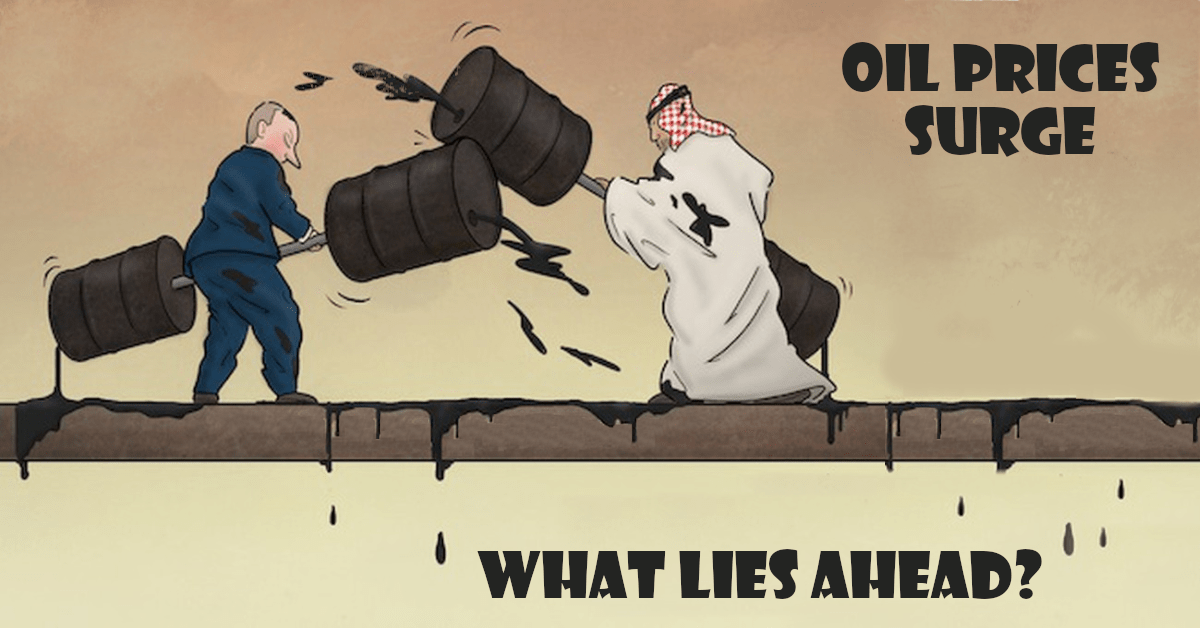We saw some exciting developments on Monday. The price of oil went on a bit of a rollercoaster ride, and it's all thanks to the continued voluntary supply cuts by two major oil-producing players, Saudi Arabia and Russia. Let's break down what happened and what it could mean for the future of oil prices.
The Scoop
Oil Prices Bounce Back:
First off, oil prices got a boost. Brent crude futures jumped up by $1.25 (that's a 1.47% increase) to hit $86.14 per barrel. Meanwhile, U.S. West Texas Intermediate crude wasn't far behind, climbing by $1.29 (1.6%) to $81.80. This was a welcome turnaround after the oil market had experienced a 6% dip in the previous week, reminding us of how unpredictable this market can be.
Saudi Arabia's Pledge:
Saudi Arabia stepped up to the plate by confirming its commitment to cut an additional 1 million barrels per day (that's bpd) until the end of December.
The aim?
To keep its oil output at around 9 million bpd. Saudi Arabia is making it clear that it's in for the long haul when it comes to supporting oil prices.
Russia Joins the Club:
Russia wasn't about to be left out. They announced their own commitment to continue cutting 300,000 bpd from their crude oil and petroleum product exports, sticking with the plan until the end of December.
It's evident that both Saudi Arabia and Russia are on the same page when it comes to keeping the oil market stable and balanced.
What's Next?
A Possible Extension: Don't close the book just yet. There's talk of extending these supply cuts into the first quarter of 2024. Why? Well, a mix of factors like the usual seasonal dip in oil demand at the beginning of the year, ongoing worries about economic growth, and the shared goal of oil producers and OPEC+ to maintain market stability and balance.
The Chinese Twist: Now, here's where it gets interesting. All eyes are on China, especially after their October factory data didn't look too rosy. Market experts are bracing for a 3.3% year-on-year drop in exports, a slowdown from the 6.2% decline seen in September. If this data confirms weaker economic activity, it could put a dent in oil demand and potentially send prices downward.
China's Refinery Rollercoaster: While Saudi Arabia and Russia are all in on their supply cuts, Chinese refineries are slowing down. Why? Profit margins are shrinking, and there's a shortage of export quotas for the rest of the year. This reduction in refining activity might just counterbalance the impact of those supply cuts on oil prices.
Keeping an Eye on Europe: Our oil adventure wouldn't be complete without a glance at Europe. Over there, the Purchasing Managers' Index (PMI) data is showing a slowdown in euro zone manufacturing for October. These European economic concerns could indirectly affect the demand for oil, adding another twist to the plot.
What's the Verdict?
With Saudi Arabia and Russia doubling down on their supply cuts, we can expect an immediate upward nudge in oil prices. Market stability is good news, as nobody wants a flood of cheap oil.
But there's more to the story. China's economic data and the slowdown in its refineries, combined with European economic concerns, could throw some curveballs into the mix. So, while the short-term outlook is a price hike, the long-term journey of oil prices will be a balancing act, with various factors jostling for influence. It's the oil market's way of reminding us that it's a complex, ever-changing world.



















عالی ممنون از آگاه سازی شما